22+ Sample Joint Venture Agreements
-
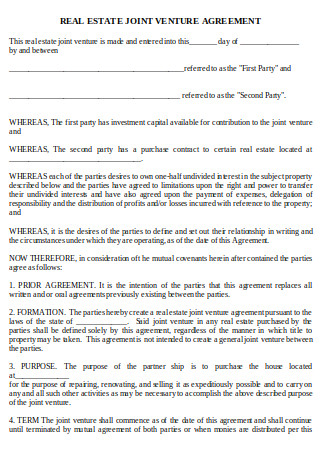
Real Estate Joint Venture Agreement
download now -

Joint Venture Lease Agreement
download now -
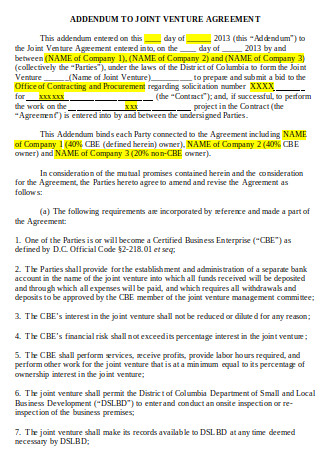
Addendum to Joint Venture Agreement
download now -
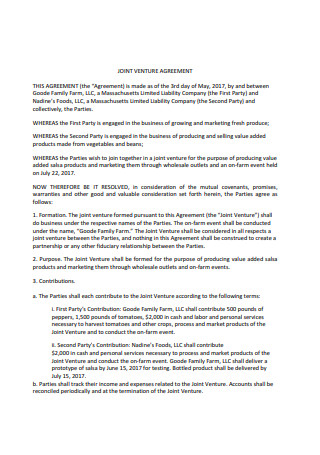
Joint Venture Agreement
download now -
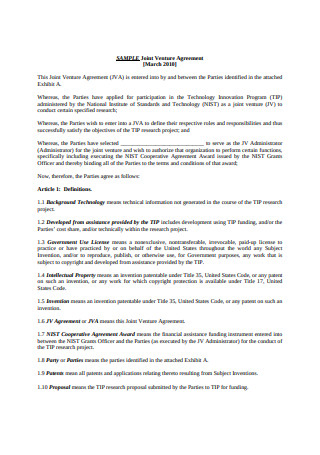
Sample Joint Venture Agreement
download now -
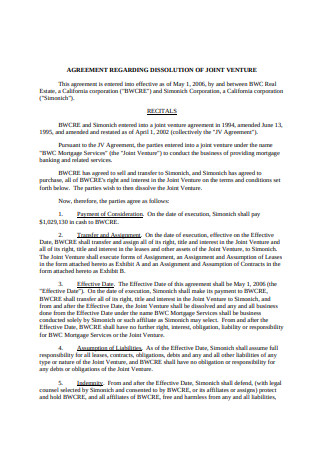
Joint Venture Agreement Sample
download now -
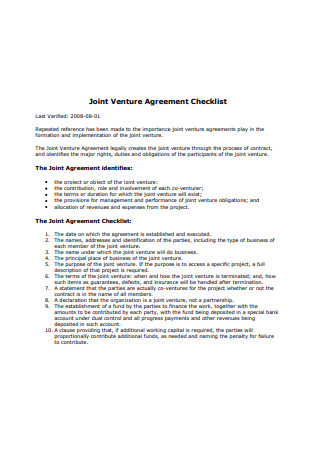
Joint Venture Agreement Checklist
download now -
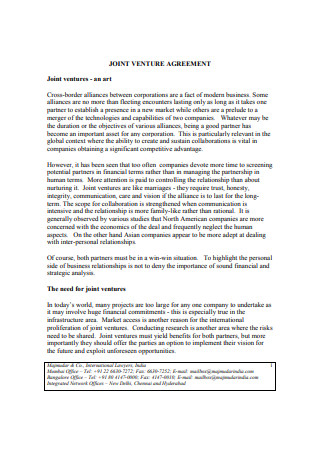
Joint Venture Agreement Example
download now -
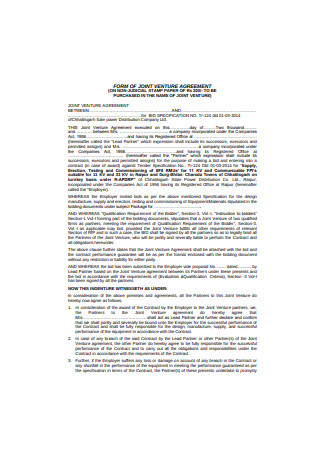
Joint Venture Agreement Form
download now -

Sample Joint Venture Agreement Format
download now -
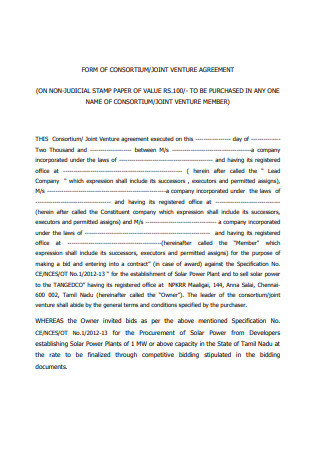
Standard Joint Venture Agreement Form
download now -

Basic Joint Venture Agreement
download now -
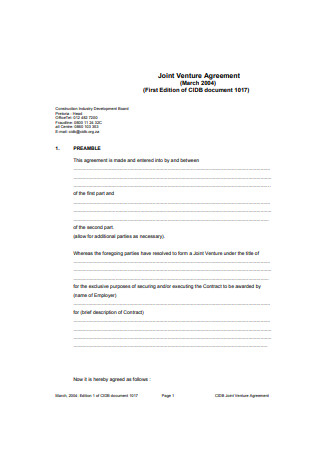
Basic Joint Venture Agreement Example
download now -
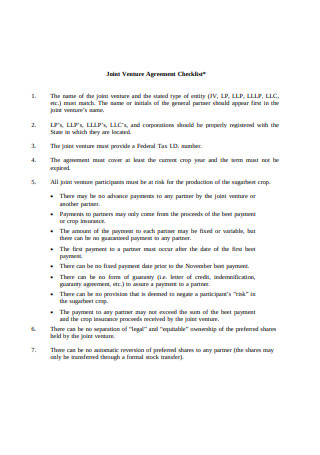
Sample Joint Venture Agreement Checklist
download now -
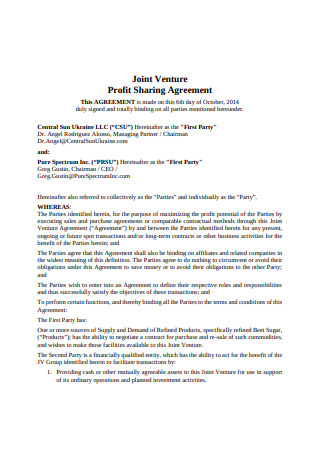
Joint Venture Profit Sharing Agreement
download now -
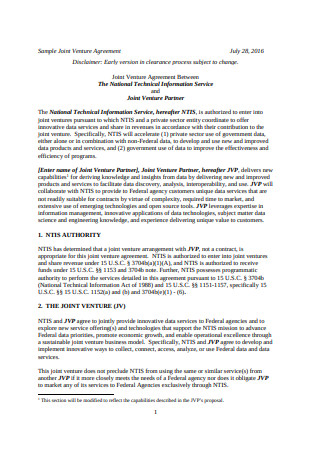
Sample Joint Venture Agreement Example
download now -
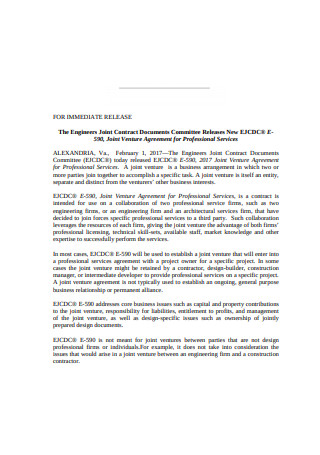
Professional Joint Venture Agreement
download now -
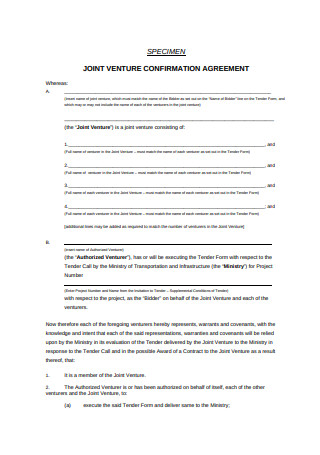
Joint Venture Confirmation Agreement
download now -

Standard Joint Venture Agreement Example
download now -

Project Joint Venture Agreement
download now -

Printable Joint Venture Agreement
download now -
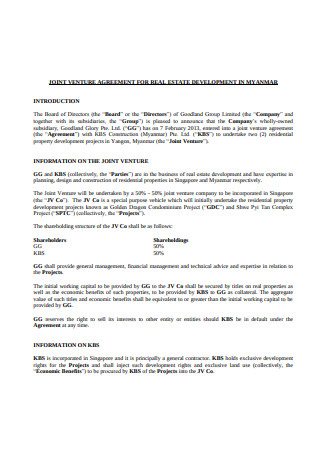
Joint Venture Agreement for Real Estate
download now -
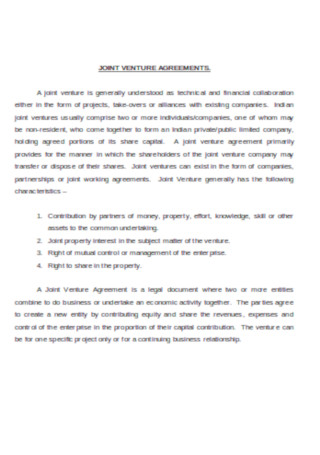
Sample Joint Venture Agreement Template
download now
FREE Joint Venture Agreement s to Download
22+ Sample Joint Venture Agreements
What is a Joint Venture Agreement?
Things to Avoid to Be Successful in A Joint Venture
How to Establish a Joint Venture Arrangement
FAQs
How much authority will each company have over a joint venture?
How do companies get profit from a joint venture?
Who will be liable if the joint venture becomes bankrupt?
What is the most practical way to set up a joint venture?
What is a joint development agreement?
What is a Joint Venture Agreement?
A joint venture happens when two companies combine in the pursuit of executing a specific project plan while maintaining their status as independent entities. In a joint venture, both parties agree to pool their assets, share the risks, and share expenses and profits. Corporations, limited liability companies, and partnerships can merge to establish a joint venture. A joint venture agreement is a legally binding contract between two business entities. It details the processes that both parties must undergo to accomplish a specific business goal.
The three primary reasons why businesses create joint ventures is to pool resources, save on expenses, and combine expertise. Joint ventures can benefit by pooling their resources to fulfill their project goals. There are companies that may have good manufacturing processes, while other companies may have several networks for distribution. Also, joint ventures can save on their expenses by increasing production at a cheap cost or by sharing the costs for labor and advertising. Moreover, joint ventures can unite and share their expertise and skill sets.
Things to Avoid to Be Successful in A Joint Venture
According to a 2014 article published by Entrepreneur, the percentage of joint venture failures range from 40% to 70%, but a 2017 article published by Forbes reports otherwise. For several years, companies have regarded joint ventures as a tool that is unsuccessful in expanding a business. In a research study conducted by Bain and Company, the worth of joint ventures increased yearly by 20% from the years 1995 to 2015. Furthermore, in one survey, 80% out of 253 companies claim that joint venture deals met their expectations.
Joint ventures that succeed do offer great rewards to businessmen, but undertakings that fail can cost entrepreneurs large amounts of money and time. For that reason, companies must be aware of the things to avoid when involving themselves in this type of arrangement.

How to Establish a Joint Venture Arrangement
Before you establish a joint venture, you must first know if you are ready to be involved in one. Once you have made a decision, you can follow the steps below.
Step 1: Make a Scheme of the Whole Process
A joint venture is still a business, so it involves making a business plan. Creating a scheme will help you set your goals, prepare your contributions, and define what your partner should be. This is when you lay out your expectations in a joint venture arrangement. This is an important step to follow before you try looking for a business partner. Without a plan, there is nothing to discuss about.
Step 2: Choose Your Partner
The first thing you need to do before choosing your partner is to know the kind of partner your project needs. So, this depends on what your business goal is. Do you want to expand your market? Does your scheme demand more supplies? Do you plan on working with a small company? For that reason, defining your goals must be first before you search for the right partner.
Next is to identify your prospective partners. You must set the amount of contribution every partner must offer and the reason behind the proposal. You must review your list of customers, suppliers, and other small businesses you have labored with before. This will be easier since you had past dealings with them, and most likely, they will approve your proposal. Also, adjusting with them will be smoother.
Last is to make an assessment tool that will evaluate your partner before you both sign the agreement. You can simply create questions that he/she must honestly answer. You can also ask for their financial statements to be sure of the company’s capability.
Step 3: Construct a Joint Venture Contract
Creating a joint venture agreement is essential to make the plan operate. A basic contract should contain the following details: (1) Goals. Both parties must have the same objectives. This ensures that they have similar goals to accomplish. (2) Contributions. A joint venture contract must set the specific contributions each party has to offer. Issues about money can create conflict. Therefore, this part of the agreement must be clear. (3) Intellectual Property. The agreement must detail how both parties will use intellectual properties, especially when they belong to the other party. (4) Management. This is another section of the agreement that should detail who has the right to control over a particular issue. (5) Conditions for termination. Detail the conditions that may lead to contract termination.
Step 4: Make Your Partnership Work
Running a new business will be easier when both parties communicate well. Also, you should assess the rate of success of your joint contract through a performance scale or an inspection. Moreover, you must be aware of the reality that there will be a time for adjusting before both parties can perfectly work together. Having this reality in mind will be a reason for continuing with the plan even if small issues arise.
FAQs
How much authority will each company have over a joint venture?
This completely depends on the written agreements. When a new company is created, the agreement will normally include details concerning the parties’ rights to designate board members. Most often, partners in a joint venture agree to each have veto rights.
How do companies get profit from a joint venture?
Usually, joint venture companies distribute profits through dividends, which mainly depends on the business’ current cash flow. In partnerships, partners directly collect a fair share of profits according to what is written in a partnership contract. The partnership contract must specify what payment co-owners can benefit from out of the partnership.
Who will be liable if the joint venture becomes bankrupt?
If the new company is a limited liability company, typically a shareholder will not be completely liable for the debt. The liability depends on the amount of money a shareholder agrees to pay in a joint venture. If a shareholder has guaranteed the company’s debts, then he/she will be liable for them. If the new company is a partnership, the liability will depend on how the venture became insolvent.
What is the most practical way to set up a joint venture?
The most common way of setting up a joint venture company is to form a limited liability company. The main advantage of this is to protect both parties from liability in case the undertaking becomes insolvent. As we have mentioned earlier, the liability depends on what shareholders agree to pay for their shares in the agreement. However, there are still tax consequences when one or both parties transfer major assets into the deal. Another way is to create a limited liability partnership because this structure may lessen a company’s tax liability. If a company doesn’t need to be part of the management in a joint venture, it is best to utilize contractual deals instead of establishing another business entity.
What is a joint development agreement?
A joint development agreement is a contract between two or more individuals who are working as one to develop a new technology or product. The parties involved usually negotiate before or even during the starting point of the relationship. Note that intellectual property is a big issue when it comes to this type of deal. Therefore, the contract should be clear about ownership.
A joint venture contract may only be temporary, but its main purpose is to increase a business’s profit. In our example earlier, Sony Ericsson started in 2002 and ended in 2011, with its peak sales in 2007. Several years later, SONY became the sole owner of the joint venture. Both companies reached and profited millions from their partnership because they decided to sign a joint venture agreement.
